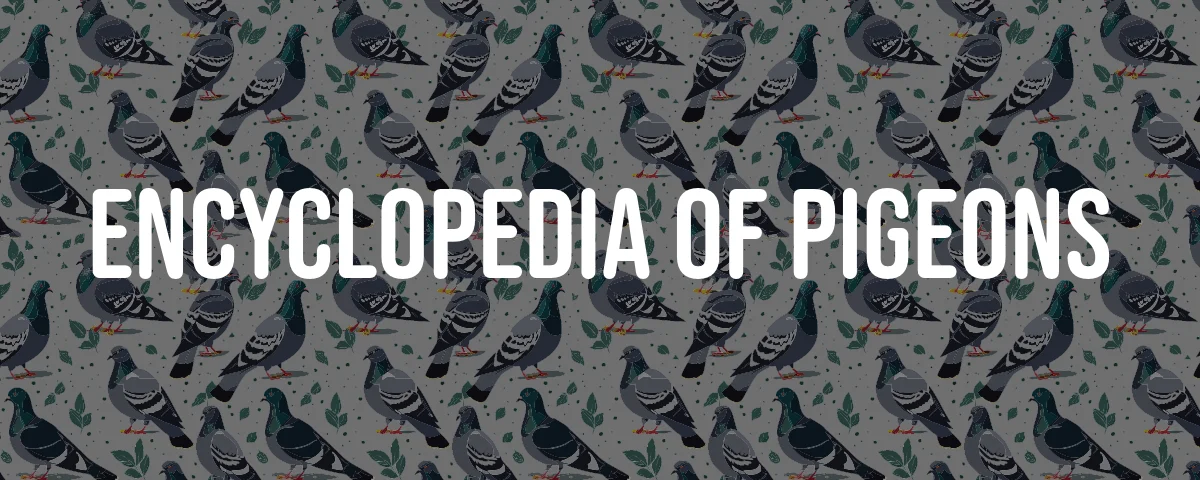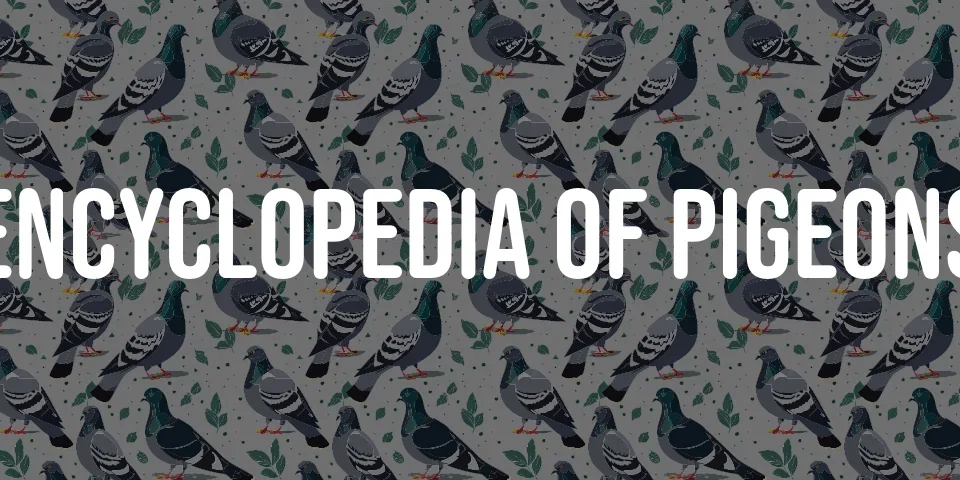Understanding the Cologne Tumbler
Try to picture, for a moment, a bird that pirouettes through the sky not as a mere show-off, but as a living embodiment of centuries-old artistry—a feathered acrobat whose flips and spins have dazzled both casual onlookers and the most jaded of pigeon fanciers. Enter the Cologne Tumbler. Or, if you want to impress at your next niche trivia night: Kölner Tümmler, or perhaps the ever-so-French Culbutant de Cologne. Whatever your language of choice, the spectacle remains the same.
Though these birds now bask in the limelight of pigeon shows and club gatherings, their lineage traces a winding path back to the Netherlands. Generations of breeders—some patient, some perhaps madly ambitious—obsessed over perfecting their signature mid-air somersaults. The result? A breed that doesn’t just fly; it tumbles, twists, and turns with a precision that borders on the poetic.
Now, if you’re into pigeon taxonomy (and who isn’t, on a slow Sunday afternoon?), you’ll find two main branches on the Cologne Tumbler family tree:
- clean-legged types, whose legs are as smooth as a jazz saxophone solo,
- muffled types, strutting about with lavish feathered anklets that would make even the most flamboyant 18th-century nobleman envious.
But regardless of leg attire, both types tumble with flair that’s impossible to ignore.
It’s worth noting: these birds weren’t just bred for flash. Over time, their very bodies—sleek, compact, with a certain air of determined elegance—were sculpted to complement their aerial artistry. Today, when one swoops overhead or takes its place at a show, the crowd doesn’t just see a pigeon; they witness the echo of centuries of careful, perhaps even obsessive, selection.
What is a Cologne Tumbler?
To the untrained eye, a pigeon is just a pigeon—until, of course, you’ve watched a Cologne Tumbler in flight. “Kölner Tümmler,” as the Germans say, is not your garden-variety city dweller. This bird is the descendant of Columba livia, the ever-resourceful rock pigeon, but it has been transformed by human hands and hopeful hearts into a living stunt pilot.
You’ll encounter them in two flavors:
- clean-legged, with legs as neat as a freshly pressed suit,
- muffled, sporting tufts of feathers like tiny feathered boots.
Looks aside, both varieties share the same daredevil DNA, flipping and rolling in midair with enviable aplomb. One wonders if, deep down, they know we’re watching.
History and Origin of the Cologne Tumbler
“Culbutant de Cologne”—it sounds almost like a perfume, and perhaps that’s fitting, given the breed’s intoxicating allure. The first references to these aerial marvels stretch back to the mists of distant history—1600 B.C.E., give or take a few centuries. They may have started their journey in the Netherlands, but it was in the bustling German city of Cologne that the breed truly took flight, both literally and figuratively.
Imagine a time when breeders, driven by dreams of airborne artistry, devoted themselves to refining every aspect of the bird: not just how it flew, but how it looked while doing so. The Cologne region became a hotbed of innovation, the birthplace of a breed that would eventually captivate pigeon fanciers from continents near and far. Today, their global standing is the result of this relentless pursuit of perfection—equal parts athlete and aristocrat.
Varieties of Cologne Tumblers
Within the mysterious cabal of “Kölner Tümmler” devotees, you’ll find lively debates over which variety reigns supreme:
- clean-legged,
- muffled.
The clean-legged version is all about minimalist chic—legs as bare as a ballet dancer’s. Muffled Tumblers, on the other hand, come dressed for a masquerade, feathers cascading down their legs in a display of baroque splendor. No matter their choice of footwear, the tumbling ability remains the unifying thread—a kind of “secret handshake” among this dazzlingly diverse breed. It’s as if every bird carries its own signature, yet all sign the same contract with gravity and grace.
Cologne Tumbler as a Fancy Pigeon
Call it “Culbutant de Cologne,” call it “Kölner Tümmler”—just don’t call it ordinary. In the world of fancy pigeons, this breed sits comfortably atop the pecking order, not just for its acrobatics but for a whole wardrobe of visual quirks and color splashes.
Within their ranks, you’ll spot:
- some with legs as smooth as a marble statue,
- others with flamboyant feathered cuffs,
- and then there are the colorists: Tumblers painted by nature in patterns and hues as unpredictable as a Jackson Pollock canvas.
All this variety didn’t just happen. It’s the result of a thousand tiny decisions made by breeders with an eye for both beauty and performance, nudging the breed ever closer to a kind of living artwork.
Classification and Subclasses
If you’re the sort who likes lists, the Cologne Tumbler offers a few neat categories:
- clean legs that wouldn’t look out of place on a runway,
- muffled feet that seem designed for a winter gala,
- and then, the peacocks: birds whose feathers swirl with patterns that rival the most elaborate tapestries.
Each subclass is its own small universe, but all orbit the same sun: a blend of form and flight that can’t be easily replicated.
Lineage from the Rock Pigeon
Once upon a time, in a world where cliffs were the only skyscrapers and the wild ruled, there was Columba livia—the rock pigeon. Fast forward several millennia, and a handful of these hardy survivors have been coaxed and cultivated into something altogether different: the Cologne Tumbler.
Traits once necessary for survival—agility, vigilance, a certain plucky elegance—have been redirected, channelled into feats of tumbling and a visual panache that their wild ancestors could never have imagined.
What’s been dialed up by generations of breeders?
- gravity-defying flips,
- an ever-expanding palette of feather colors,
- an aura of refinement that’s hard to quantify but impossible to miss.
The result is a bird that’s both a nod to its roots and a leap into the extravagant.
Characteristics of the Cologne Tumbler Pigeon
If you could distill charisma into feathers, you’d get something like the Cologne Tumbler. These birds are compact—aerodynamically designed, you might say—with heads that are more round than sharp, and wings that look as if they’re made for something more than the daily commute.
Feather fashions run the gamut: some show off a single, solid hue, while others seem to have been painted by a particularly imaginative artist. Legwear? You’ve got your choice of the minimalist look or the all-out, feathered-glam party.
- clean legs—think of a dancer’s bare feet,
- muffled legs—imagine boots lined with the softest down.
But it’s not just about looks. These birds are notoriously sociable, quick to adapt, and easy to handle—traits that have made them favorites at both international shows and backyard lofts. There’s a kind of quiet confidence about them, a sense that they know they’re special but don’t need to brag.
Physical Traits and Varieties
Let’s paint a quick portrait: start with a body that’s compact but muscular, add a head that’s more round than angular, and wings that seem engineered for stunts. That’s your Cologne Tumbler.
Their feathers? Well, here’s where things get interesting:
- some wear a single, deep shade—a kind of avian little black dress,
- others show up with intricate patterns, each feather a brushstroke in a larger masterpiece,
- both versions are impossible to ignore.
Legs, too, come in two flavors:
- sleek and smooth,
- or gloriously feathered, as if the bird is off to a masquerade.
And, for all their differences, both types share one trait: the ability to turn the sky into their own private circus.
Beyond the feathers and flips, you’ll find a temperament that’s as friendly as it is adaptable. Whether strutting their stuff at a show or lounging in a cozy backyard loft, these birds are equal parts companion and showstopper.
Temperament and Behavior
Let’s be honest—some birds are standoffish, others just plain odd. Not so with the Cologne Tumbler. These guys are charmers, through and through. They thrive on attention, love a good fly-around, and seem to get a kick out of interacting with their human caretakers.
Their upbeat attitude isn’t just luck—it’s the product of both good genes and the right environment. Treat them well, and you’ll have a feathered friend who’s lively, playful, and always game for a bit of mid-air drama.
Care and Maintenance of Cologne Tumbler Pigeons
Pigeon keeping can be a bit like gardening: the right soil—or in this case, diet and digs—makes all the difference. Cologne Tumblers are no exception. Feed them poorly, and their flips will be more flop than flight. Give them the good stuff, and they’ll make gravity look optional.
Here’s what’s on the menu:
- a blend of high-quality seeds,
- grains like millet or wheat—old-school energy bars,
- fresh greens: spinach, peas, maybe a carrot if you’re feeling generous,
- and, of course, a constant supply of fresh, clean water—think of it as their in-flight beverage service.
Housing? Forget cramped cages. These birds want room to move, light to bask in, and fresh air to breathe. Think of their loft as a studio apartment with sky access—safe from predators, easy to keep clean, and big enough for aerial rehearsals.
Routine health checks, vaccinations, and the occasional spa day (read: parasite treatments) will keep them in top form. Get the basics right, and your Cologne Tumblers will reward you with years of acrobatics and—if you’re lucky—a little bit of pigeon affection.
Dietary Requirements
Want a Cologne Tumbler that flips for joy? Start with their plate. Their ideal diet isn’t complicated, but it does demand quality:
- seeds—sunflower or safflower for that glossy-feather look,
- grains—millet, wheat, the classics,
- fresh veggies—spinach, peas, maybe a carrot for variety.
Don’t forget water. A dehydrated Tumbler is a sad sight indeed. Keep the menu balanced, and you’ll have an energetic, healthy performer on your hands.
Housing and Environment Needs
Cologne Tumblers are not homebodies by choice—they need space to spread their wings, literally. A cramped loft is their version of a traffic jam, and nobody performs well in a jam.
Airflow is key. Stuffy lofts lead to grumpy (and sick) birds. Build with ventilation in mind, but don’t forget sturdy mesh to keep out the neighborhood cats—or worse. Sunlight matters, as does shade. Basically, design their home as if you were building your own penthouse, only with more perches and fewer complaints about the neighbors.
- cleanliness keeps disease at bay,
- perches positioned at varying heights make for happy, acrobatic pigeons,
- and a bit of daily handling helps them stay friendly and fit.
Uses of Cologne Tumbler Pigeons
There’s a reason pigeon aficionados can’t get enough of Kölner Tümmler. For one thing, they’re a joy to keep: sociable, cheerful, and unlikely to bite the hand that feeds them. Even absolute beginners find these birds a breeze—no drama, just good company.
But let’s not downplay their showbiz side. At exhibitions, Cologne Tumblers steal the spotlight with their color, their poise, and their heart-stopping flips. Whether they’re wowing judges or just strutting their stuff, they’re built to impress.
- feather patterns that look hand-painted,
- colors as bold as a street mural,
- legs that are either as bare as a summer day or decked out for a feathered fashion show.
It’s no wonder they’re crowd favorites at competitions from Berlin to Buenos Aires.
As Pets
Let’s face it: not everyone wants a dog or a cat. Some of us crave a companion with wings, a bird who greets us with a gentle coo instead of a bark. Cologne Tumblers are made for this role. They bond with their people, adapt to routines, and bring a little bit of circus magic to daily life.
Their care is straightforward—good food, fresh water, a safe place to sleep, and enough room to show off their aerial skills. Give them these basics, and you’ll have a companion who’s both gorgeous and low-maintenance.
And when friends drop by? You get to say, “Yes, that’s my pigeon doing somersaults in the living room. No big deal.”
In Exhibitions and Shows
If you’ve never attended a pigeon show, imagine a beauty contest where half the contestants can fly and the other half look like they could. Cologne Tumblers don’t just attend these events—they own them.
Judges scrutinize everything:
- posture as regal as a chess king,
- feathers that shimmer like silk,
- legs—bare or muffled, both have their fans,
- and, of course, their performance in the air.
Breeders, for their part, become part-time stylists: grooming, feeding, training, coaxing the best from each bird. The payoff? Ribbons, trophies, and—more importantly—bragging rights for having bred a champion.
But the shows aren’t just about winning. They’re about celebrating a living tradition, connecting with other enthusiasts, and maybe, if you’re lucky, finding a new favorite among the many feathered stars.
Comparing Cologne Tumblers with Other Pigeon Breeds
Let’s get real: not all pigeons are created equal. Some, like the common rock pigeon, are the reliable workhorses of the city. Others, like the Homer, are marathoners in feathered form. But the Cologne Tumbler? That’s your daredevil, your showman, the one who turns every flight into a performance.
What sets them apart? Start with the legs—some clean, some feathered—then add a kaleidoscope of patterns and colors. Compare them to Fantails, those avian ballerinas, or Homers, the steadfast couriers, and you’ll see: only the Tumbler combines ornamental beauty with jaw-dropping aerial skills.
- legs: smooth or muffled,
- feathers: more patterns than a fashion week runway,
- temperament: sociable, friendly, always up for a chat (or a flip).
It’s this rare blend that keeps Tumbler devotees coming back for more.
Differences and Similarities
Every breed has its claim to fame. Homers go the distance; Fantails strike a pose. But only the Cologne Tumbler tosses itself through the air with such abandon—compact, muscular, and seemingly born for flight.
All fancy pigeons descend from the wild rock pigeon, and the Cologne Tumbler is no exception. What makes them stand out is the leg drama: clean or muffled, always stylish. Add to that a penchant for acrobatics, and you’ve got a bird that’s both a looker and a performer.
- clean-legged or feather-booted,
- patterns that range from subtle to outrageous,
- a temperament that’s as easygoing as it is engaging.
It’s the kind of package you rarely find—athlete and model rolled into one.
Why Choose Cologne Tumblers?
Maybe you’re new to pigeons. Maybe you’re a seasoned fancier looking for your next obsession. Either way, Cologne Tumblers have a way of stealing hearts.
Their looks alone are enough: brilliant feathers, wild patterns, legs that make a statement. Their personalities? Affectionate, curious, always ready to interact.
But let’s not kid ourselves—the real magic happens in the air. Watching a Tumbler flip and roll is the kind of thing that makes you forget your phone, your to-do list, maybe even your name for a moment. They’re low-maintenance, adaptable, and just showy enough to keep things interesting.
- no fuss, just flair,
- easy to settle in with the right environment,
- perfect for the backyard dreamer and the seasoned exhibitor alike.
If you’re the type who likes your birds with a dash of drama and a whole lot of heart, well—maybe there’s a Tumbler in your future. Or maybe they’ve already tumbled into your imagination and set up shop.






